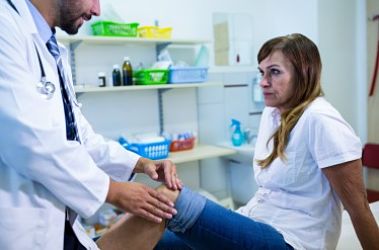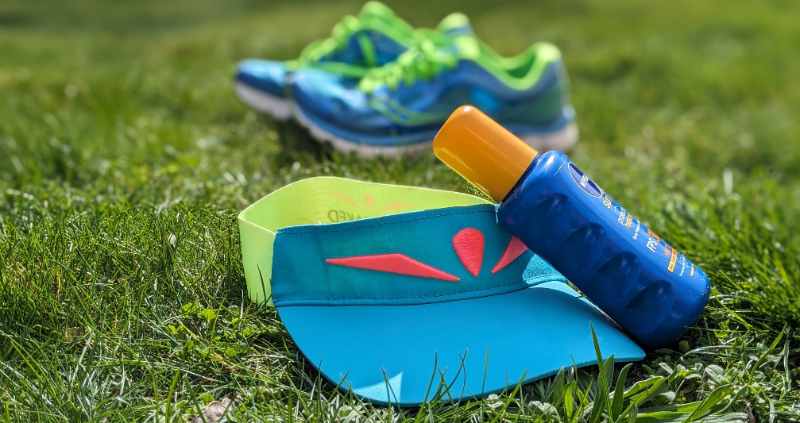Knee Bursitis in Runners
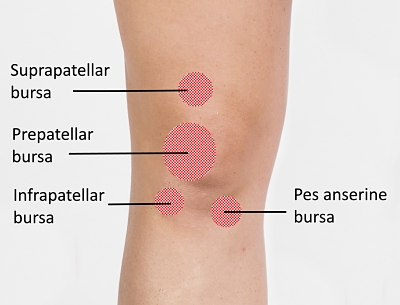 Common Knee Bursitis Sites
Common Knee Bursitis SitesKnee bursitis is the inflammation of the bursa sacs within the knee.
What is a bursa?
Bursae are small fluid filled sacs which are found all over the body. Their role is to provide lubricated cushioning between a bone and the surrounding tissue. An adult has about 160 bursae and they vary in size depending on where they are located. Some are just below the skins surface and others sit deeper in the muscle or body tissue.
Your knee has around 11- 14 bursae and the ones most commonly affected are the ones that sit above, behind or below your knee cap. Other commonly inflamed bursae include the anserine bursa which is located where your hamstring muscle attaches to your tibia (shin bone) on the inside of your knee or the bursa behind your knee.
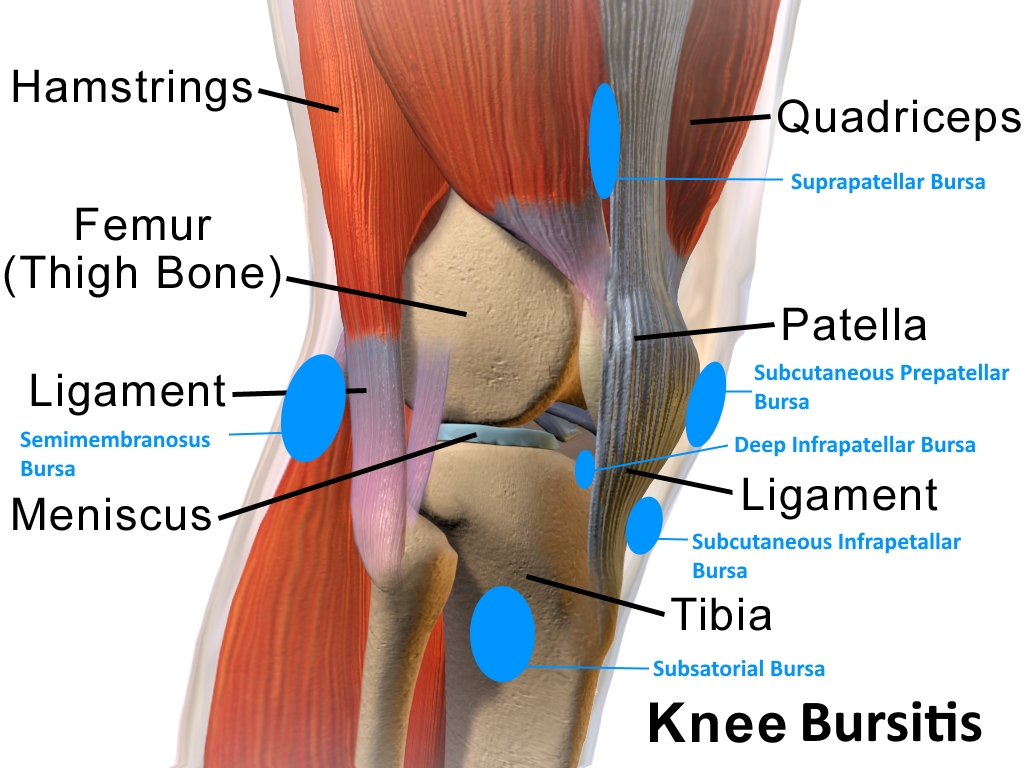
Causes of Knee Bursitis in Runners
The outer layer of a bursa is made up of synovial tissue and inside it is a thick liquid rather like egg white, known as synovial fluid. Think of it like a small water balloon.
When the bursa gets irritated due to trauma, friction or excessive repeated knee movement, it produces more synovial fluid resulting in swelling. The swelling then causes pain and limited knee movement.
Common causes in runners are:
- Too much running
- Tight hamstrings
- Being overweight
- Osteoarthtits of the knee
- Mensiscus tear due to falling or trauma
Other causes of knee pain in runners
Symptoms of Knee Bursitis
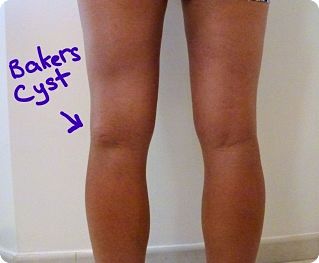 Bakers Cyst
Bakers Cyst- Depending on which bursa is inflamed, you will have pain at the site of the bursa. So this might be a couple of inches below the joint on the inside of the knee or perhaps around or under your knee cap or behind the knee (known as a Baker's cyst).
- Pain on pressing the inflamed bursa site.
- There is often swelling and redness of the knee.
- Your knee may feel tight due to the swelling.
- Your knee feels painful on movement, particularly when bending it or going up or down stairs.
Treating Knee Bursitis
Your aim with treating knee bursitis is to reduce the swelling, reduce the pain and eliminate the cause.
How long will it take to heal?
With the right treatment, it might take 2 or 3 months for your knee to feel normal again.
There is not much research on the best way to treat knee bursitis so it is difficult to say which is the best treatment. However what seems to work for a lot of people is:
- REST. Stop running for a few days and allow the inflammation and irritation to subside.
- Avoid any movement that irritates it even more, such as climbing stairs or repetitive knee bending.
- Apply ice at regular intervals two or three times a day for 5 - 10 minutes at a time and for 48 hours. How to ice correctly.
- Taking anti inflammatory tablets such as ibuprofen are generally not recommended as they interfere with the natural healing process. Sometimes inflammation can be good as it is a sign to the body to release more blood, oxygen and nutrients to the damaged area in order to start the healing process.
- If there is pain on the inside of the knee, relieve the pressure by sleeping with a pillow between your knees.
- If the bursitis has been caused by tight hamstrings then start gentle hamstring stretching exercises.
- Start strengthening your adductor muscles (sometimes called groin muscles). These are the muscle that run from your groin and down your inner thigh and towards your knee. For some of the exercises you need resistance bands which are worth investing in if you don't have any.
- If after a couple of weeks, things are not improving, go see your doctor or physio. Sometimes steroid injections or drainage of the bursa are recommended but these are usually a last resort.
Other causes of knee pain in runners.
(Please note that as an Amazon associate I earn from any qualifying purchases)


